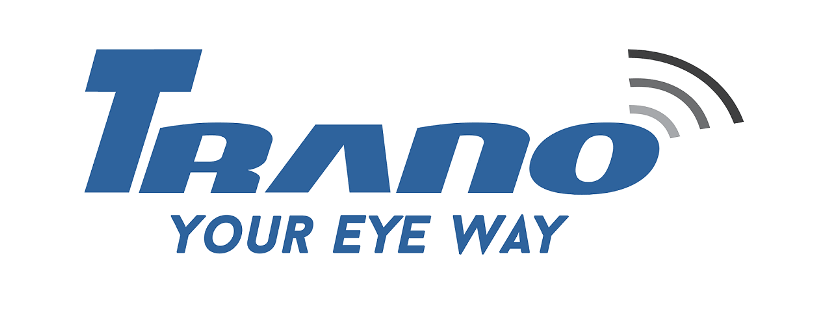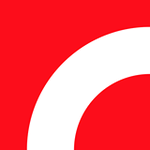Description

AssetWorks

Tragging Fixed Assets
Comprehensive Overview: AssetWorks vs Tragging Fixed Assets
AssetWorks and Tragging are companies that provide fixed asset management solutions, each with its own suite of products and services designed to help organizations efficiently manage their assets. Here's a comprehensive overview of both, focusing on their primary functions, target markets, market share, user base, and key differentiating factors.
AssetWorks
a) Primary Functions and Target Markets
AssetWorks offers a broad range of asset management solutions targeted at both public and private sectors, including government agencies, educational institutions, and corporations. The primary functions of AssetWorks' software include:
- Fixed Asset Management: Tracking, managing, and reporting on fixed assets throughout their lifecycle.
- Facilities Management: Space management, maintenance management, and project management.
- Inventory Management: Efficient management of supplies and stock levels.
- Fleet Management: Tracking vehicle usage, maintenance, and compliance for fleets.
Target Markets:
- Government and Public Sector
- Higher Education
- Corporate Enterprises
- Transportation and Logistics
b) Market Share and User Base
AssetWorks has a substantial presence in North America, especially within the public sector due to its tailored solutions for government and educational institutions. While detailed market share statistics might not be publicly available, AssetWorks' extensive client base and longstanding reputation in asset management make it a significant player in the industry.
c) Key Differentiating Factors
- Comprehensive Solutions: AssetWorks offers integrated solutions that cover a wide range of asset management needs, from fixed assets to fleet and facilities management.
- Customizability: High level of customization available for different sectors and specific customer needs.
- Established Reputation: Strong track record and experience, especially in public sector markets.
Tragging
a) Primary Functions and Target Markets
Tragging is relatively newer compared to AssetWorks and focuses on innovative fixed asset management solutions with a strong emphasis on leveraging RFID technology. The primary functions include:
- Fixed Asset Tracking: Using RFID technology to enhance accuracy and efficiency in tracking fixed assets.
- Inventory Control: Streamlined processes for managing physical inventory and audits.
- Compliance and Reporting: Ensuring alignment with financial regulations and providing detailed asset reports.
Target Markets:
- Corporate Sector
- Healthcare
- Retail
- Manufacturing
b) Market Share and User Base
Tragging is a smaller player compared to AssetWorks, with a more focused market reach, particularly in industries that benefit from RFID technologies. While it may not have the extensive user base that AssetWorks has, Tragging's user base is growing among companies looking for advanced technological solutions for asset management.
c) Key Differentiating Factors
- RFID Technology Focus: Core emphasis on using RFID for asset tracking, which offers higher precision and reduced manual errors.
- Agility and Innovation: A more agile product approach with a focus on integrating cutting-edge technologies.
- Cost-Efficiency for Small-Medium Enterprises: Often more cost-effective for smaller businesses that need advanced asset management solutions without the broader functionalities required by larger enterprises.
Comparison Overview
- Technology and Innovation: Tragging leads with RFID-centric solutions, providing high-tech, efficient methods for asset management. AssetWorks offers a broader range of management tools integrated across multiple domains.
- Market Reach: AssetWorks commands a larger presence, particularly in public sectors and geographically across North America. Tragging focuses more on technology-driven markets that require RFID solutions.
- Flexibility vs. Focus: AssetWorks provides large-scale, flexible solutions for diverse sectors, while Tragging specializes more narrowly in advanced RFID solutions for fixed asset tracking.
In summary, while both companies offer valuable fixed asset management solutions, they address the market with different approaches and technologies, serving distinct niches and catering to specific customer needs.
Contact Info

Year founded :
2012
Not Available
Not Available
Netherlands
http://www.linkedin.com/company/assetworks

Year founded :
Not Available
Not Available
Not Available
Not Available
Not Available
Feature Similarity Breakdown: AssetWorks, Tragging Fixed Assets
Comparing AssetWorks and Tragging Fixed Assets requires an in-depth look at their features, user interfaces, and unique offerings. Here's a breakdown:
a) Core Features in Common
Both AssetWorks and Tragging Fixed Assets likely share core functionalities typical of fixed asset management solutions:
-
Asset Tracking: Both platforms provide the ability to track the lifecycle of assets from acquisition to disposal.
-
Inventory Management: They maintain comprehensive records of physical inventory, managing both tangible and intangible assets.
-
Depreciation Management: Each software helps in calculating and managing asset depreciation, supporting multiple depreciation methods.
-
Reporting and Analytics: Offers various reporting tools for compliance and decision-making purposes, providing insights into asset usage and value.
-
Audit Support: Features to streamline audits by providing traceable asset histories and easy-to-generate audit reports.
-
Integration Capabilities: Both solutions likely support integration with other enterprise systems, such as ERP and accounting software, ensuring seamless data flow.
b) User Interface Comparison
While specific user interface (UI) details can vary based on updates and design overhauls, we can generally compare:
-
AssetWorks: Known for enterprise-level solutions, its UI might favor robustness and depth, potentially offering a more complex layout catered to larger organizations with extensive needs. The focus might be on customization and accommodating various industries.
-
Tragging Fixed Assets: This platform might emphasize simplicity and ease of use, targeting small to medium enterprises (SMEs) with a clean, straightforward UI. The design might lean towards intuitive navigation and quick deployment.
c) Unique Features
AssetWorks:
-
Industry Specialization: AssetWorks often provides tailored solutions for specific industries like education, government, and transportation, which might include regulatory compliance tools specific to these sectors.
-
Fleet and Facility Management Integration: In addition to fixed asset management, AssetWorks offers comprehensive solutions for managing fleets and facilities, which may not be a focus for Tragging.
-
Mobile and RFID Integration: Advanced mobile capabilities and the use of technologies like RFID for real-time tracking.
Tragging Fixed Assets:
-
Cost-Effectiveness: May provide a more budget-friendly option for SMEs looking for essential fixed asset management features without the complexity of larger systems.
-
Ease of Setup and Quick Implementation: Often cited as easy to set up, which can be a point of differentiation for organizations looking to deploy a solution rapidly.
-
Focus on Specific Asset Types: Depending on their product line, Tragging might offer specific tools for niche market needs, which could be advantageous for certain businesses.
In summary, while both AssetWorks and Tragging Fixed Assets share common features necessary for managing fixed assets, they differ significantly in their approach, user interface complexity, and unique features they offer. AssetWorks leans towards comprehensive, industry-specific solutions with complex integration options, whereas Tragging offers straightforward, user-friendly solutions potentially suited for smaller organizations.
Features

Maintenance Management
Mobile Access
Reporting and Analytics
Comprehensive Asset Management
Financial Management

Maintenance and Compliance
Financial Management
Reporting and Analytics
Asset Inventory Management
Best Fit Use Cases: AssetWorks, Tragging Fixed Assets
AssetWorks and Tragging Fixed Assets are both tools used for asset management, but they cater to different needs and types of organizations. Here's a breakdown of their best fit use cases:
AssetWorks
a) For what types of businesses or projects is AssetWorks the best choice?
AssetWorks is a comprehensive asset management solution that is highly suitable for:
- Large Enterprises and Government Agencies: It provides robust asset lifecycle management, making it ideal for organizations needing to manage vast and diverse asset portfolios, such as state and municipal governments, universities, and large corporations with complex asset management needs.
- Transportation and Public Works: With strong capabilities in fleet and infrastructure management, AssetWorks is well-suited for transportation departments and public works projects where there is a need to efficiently manage large fleets or public infrastructure.
- Education Sector: Universities and school districts can use AssetWorks for campuswide asset tracking, ensuring precise management of classroom technology, facilities, and other educational resources.
d) How do these products cater to different industry verticals or company sizes?
AssetWorks offers modular solutions that can be tailored for different industry verticals, such as transportation, government, and education. The scalability of the software makes it a good fit for large entities looking to integrate asset management with other enterprise systems. Its functionality can support extensive datasets and users, offering in-depth analytics and reporting tools that are critical for making informed decisions across various departments.
Tragging Fixed Assets
b) In what scenarios would Tragging Fixed Assets be the preferred option?
Tragging Fixed Assets is typically more suitable for:
- Small to Medium Enterprises (SMEs): Businesses looking for a cost-effective solution with an easy implementation process and less complex functionality would benefit from Tragging. It's particularly useful for SMEs that do not have overly complex asset management needs.
- Startups and Growing Companies: These companies may require a straightforward solution that can grow incrementally with expanding asset bases, rather than a fully integrated system like AssetWorks.
- Companies with Emphasis on Simplicity and Efficiency: If the focus is on simplicity, fast deployment, and efficiency without the need for extensive customization, Tragging provides a user-friendly interface and essential tracking capabilities.
d) How do these products cater to different industry verticals or company sizes?
Tragging Fixed Assets tends to focus on providing basic, essential features suitable for industries that may not require heavy customization or comprehensive asset lifecycle management. It caters primarily to sectors like retail, small scale manufacturing, and startups that need straightforward asset tracking and management without the complexity of larger enterprise solutions. Its ease of use and cost-effectiveness make it an attractive choice for smaller organizations.
In summary, AssetWorks is best suited for large organizations and complex projects in need of an all-encompassing asset management solution, while Tragging Fixed Assets is ideal for smaller to mid-sized companies seeking a more straightforward, cost-effective approach to managing their assets.
Pricing

Pricing Not Available

Pricing Not Available
Metrics History
Metrics History
Comparing teamSize across companies
Conclusion & Final Verdict: AssetWorks vs Tragging Fixed Assets
To provide a comprehensive conclusion and final verdict for AssetWorks and Tragging Fixed Assets, we need to consider various factors, including functionality, cost, ease of use, implementation, customer support, and overall value. Here's the analysis based on these attributes:
Conclusion and Final Verdict
a) Best Overall Value:
Both AssetWorks and Tragging Fixed Assets have their unique strengths and are suitable for different organizational needs. However, when weighing the overall value, AssetWorks generally offers a more comprehensive suite of features that cater to larger organizations with complex asset management needs. It provides robust tracking, reporting, and integration capabilities, which may outweigh its higher cost for organizations requiring extensive asset management solutions. In contrast, Tragging Fixed Assets is potentially more cost-effective and user-friendly, better suited for smaller organizations or those with fewer asset tracking requirements who prioritize simplicity and affordability.
b) Pros and Cons:
AssetWorks:
-
Pros:
- Comprehensive asset management capabilities
- Advanced reporting and analytics features
- Integration with other enterprise systems
- Scalable for large organizations
- Strong customer support and customization options
-
Cons:
- Higher cost, which may be prohibitive for smaller organizations
- Longer implementation times due to complexity
- May have a steeper learning curve for inexperienced users
Tragging Fixed Assets:
-
Pros:
- Cost-effective solution, particularly for small to mid-sized businesses
- User-friendly interface and easy implementation
- Quick setup and deployment
- Basic features cover essential asset tracking needs
- Potentially easier for users with limited technical expertise
-
Cons:
- Limited advanced features compared to AssetWorks
- May not scale well for very large enterprises or intricate asset systems
- Fewer integration options with other enterprise systems
c) Recommendations:
- Organizations should first assess their asset management needs, budget, and the complexity of their operations.
- For larger organizations or those with complex asset management requirements, AssetWorks is recommended due to its extensive features and scalability. The investment in this platform is justified for high-volume asset tracking and advanced analysis.
- For smaller organizations or those prioritizing cost-efficiency, Tragging Fixed Assets may provide sufficient functionality at a lower cost and with greater ease of use.
- It's advisable for potential users to conduct trials or demos of both systems to better understand which platform aligns most closely with their workflow and user preferences.
- Additionally, considering future growth and the potential need for more advanced features can guide organizations in making a decision that will suit both current and future needs.
Overall, the choice between AssetWorks and Tragging Fixed Assets largely depends on the size and complexity of the organization, specific functionality requirements, and budget constraints.
Add to compare
Add similar companies



